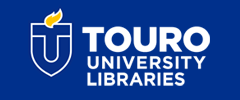NYMC Faculty Publications
Unrelated Donor Allogeneic Transplantation After Failure of Autologous Transplantation for Acute Myelogenous Leukemia: A Study From the Center for International Blood and Marrow Transplantation Research
Author Type(s)
Faculty
DOI
10.1016/j.bbmt.2013.04.022
Journal Title
Biology of Blood and Marrow Transplantation: Journal of the American Society for Blood and Marrow Transplantation
First Page
1102
Last Page
1108
Document Type
Article
Publication Date
7-1-2013
Keywords
Adolescent, Adult, Aged, Antineoplastic Agents, Child, Child, Preschool, Female, Follow-Up Studies, Graft vs Host Disease, Hematopoietic Stem Cell Transplantation, Humans, Infant, International Cooperation, Leukemia, Myeloid, Acute, Male, Middle Aged, Recurrence, Survival Analysis, Transplantation Conditioning, Transplantation, Autologous, Transplantation, Homologous, Unrelated Donors
Disciplines
Medicine and Health Sciences
Abstract
The survival of patients with relapsed acute myelogenous leukemia (AML) after autologous hematopoietic stem cell transplantation (auto-HCT) is very poor. We studied the outcomes of 302 patients who underwent secondary allogeneic hematopoietic cell transplantation (allo-HCT) from an unrelated donor (URD) using either myeloablative (n = 242) or reduced-intensity conditioning (RIC; n = 60) regimens reported to the Center for International Blood and Marrow Transplantation Research. After a median follow-up of 58 months (range, 2 to 160 months), the probability of treatment-related mortality was 44% (95% confidence interval [CI], 38%-50%) at 1-year. The 5-year incidence of relapse was 32% (95% CI, 27%-38%), and that of overall survival was 22% (95% CI, 18%-27%). Multivariate analysis revealed a significantly better overal survival with RIC regimens (hazard ratio [HR], 0.51; 95% CI, 0.35-0.75; P18 months) from auto-HCT to URD allo-HCT was associated with significantly lower riak of relapse (HR, 0.19; 95% CI, 0.09-0.38; P
Recommended Citation
Foran, J. M., Pavletic, S. Z., Logan, B. R., Agovi-Johnson, M. A., Pérez, W. S., Bolwell, B. J., Bornhäuser, M., Bredeson, C. N., Cairo, M., Camitta, B. M., Copelan, E. A., Dehn, J., Gale, R. P., George, B., Gupta, V., Hale, G. A., Lazarus, H. M., Litzow, M. R., Maharaj, D., Marks, D. I., Martino, R., Maziarz, R. T., Rowe, J. M., Rowlings, P. A., Savani, B. N., Savoie, M., Szer, J., Waller, E. K., Wiernik, P. H., & Weisdorf, D. J. (2013). Unrelated Donor Allogeneic Transplantation After Failure of Autologous Transplantation for Acute Myelogenous Leukemia: A Study From the Center for International Blood and Marrow Transplantation Research. Biology of Blood and Marrow Transplantation: Journal of the American Society for Blood and Marrow Transplantation, 19 (7), 1102-1108. https://doi.org/10.1016/j.bbmt.2013.04.022


